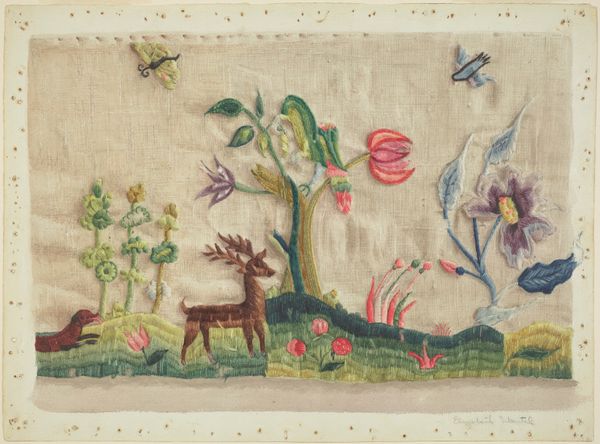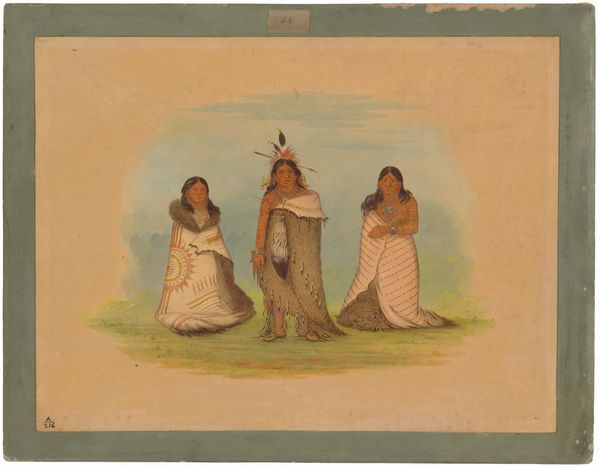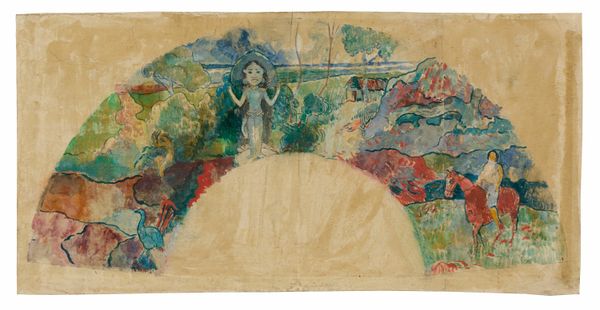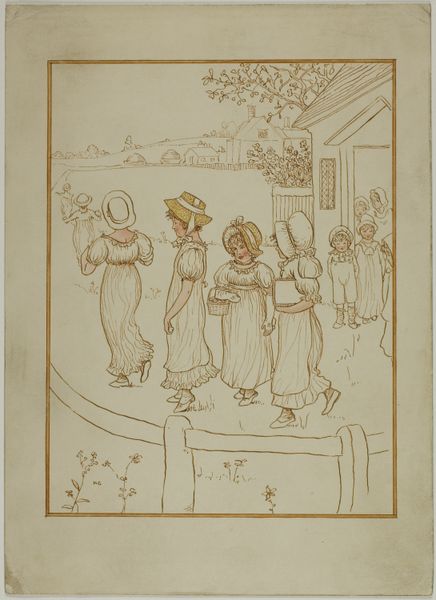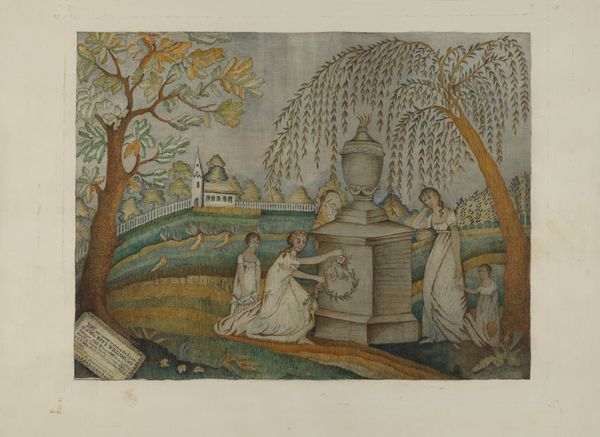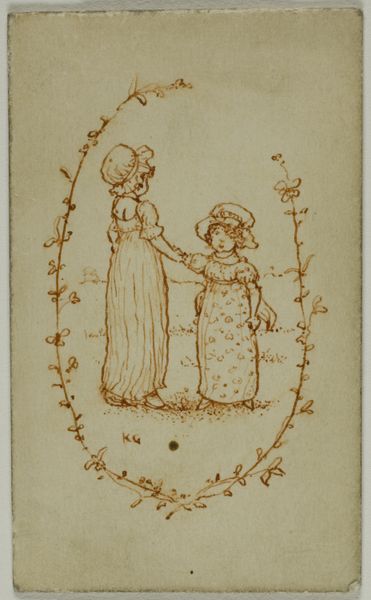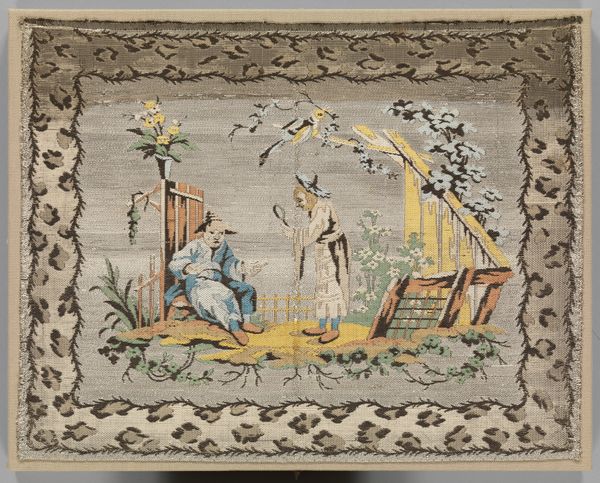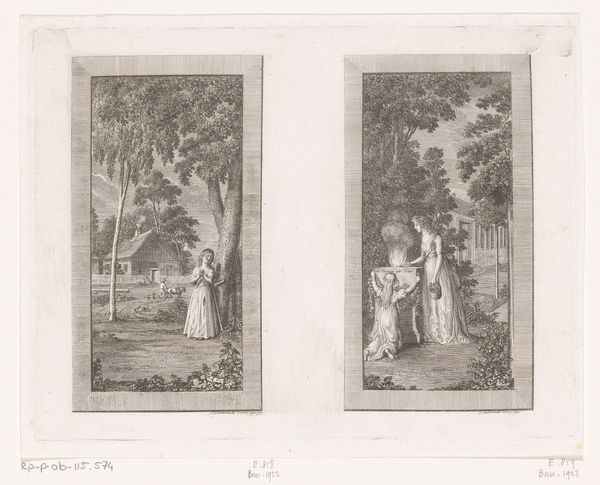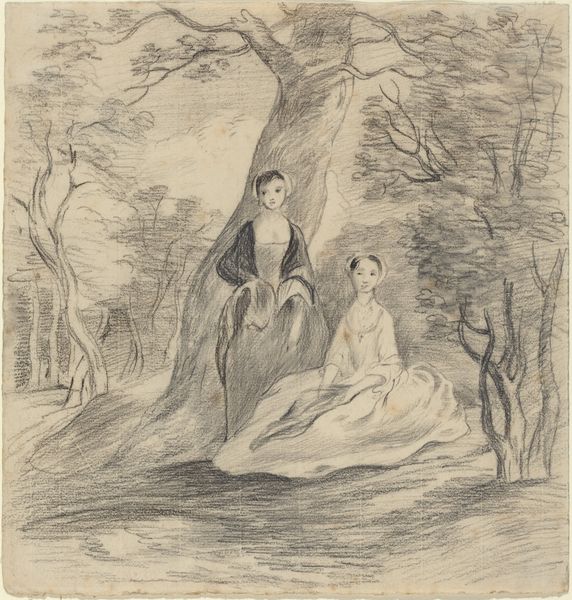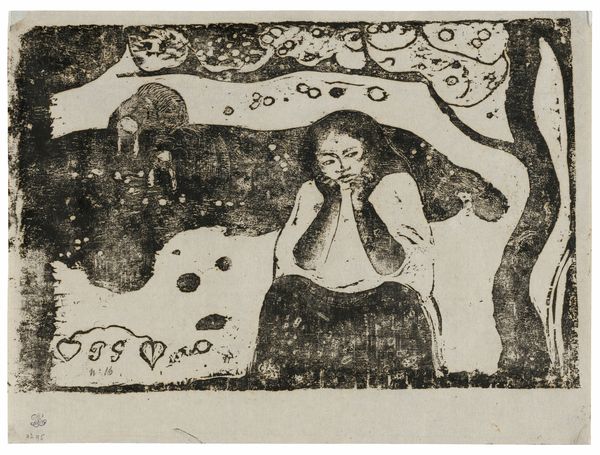
drawing, paper, watercolor
#
portrait
#
drawing
#
landscape
#
figuration
#
paper
#
watercolor
#
coloured pencil
Dimensions: sheet: 25.4 × 30.6 cm (10 × 12 1/16 in.)
Copyright: National Gallery of Art: CC0 1.0
Curator: Editor: This is "Dancing Children," a watercolor and ink drawing on paper created around 1782 by Jane Palmer. There's a naive, almost dreamlike quality to it. How do you interpret this work, especially given the era it was created in? Curator: It's tempting to view this idyllic scene of childhood innocence through a sentimental lens, but it's crucial to understand its socio-political context. In late 18th-century England, childhood was increasingly being idealized, especially among the middle and upper classes. This drawing, in its emphasis on leisure and play, subtly reinforces those class-based ideals. Notice how the children, presumably from a privileged background, are presented in a landscape devoid of any signs of labor or hardship. What do you make of that omission? Editor: That's a good point. The focus is solely on their carefree existence, without any hint of the social inequalities of the time. It almost feels like propaganda. Curator: Precisely. Art often serves as a reflection—or perhaps a carefully constructed illusion—of its time. Consider also the significance of the wreath of flowers. It’s a recurring motif, often symbolizing purity, beauty, and celebration. But who has access to such carefree celebration? Who is excluded from this vision of pastoral bliss? These are the questions we must continually ask ourselves. Editor: It’s interesting how seemingly innocent imagery can carry such loaded meanings. It challenges my initial reading of the piece as purely whimsical. Curator: Exactly! By engaging with art history and contemporary theory, we can reveal those hidden power structures and develop a more nuanced understanding of works like "Dancing Children." Editor: I'll definitely look at art from this era with fresh eyes, considering not just what is shown, but also what's deliberately left out. Curator: And that awareness allows us to see art as active participants in broader cultural conversations, shaping—and being shaped by—the world around them.
Comments
No comments
Be the first to comment and join the conversation on the ultimate creative platform.

